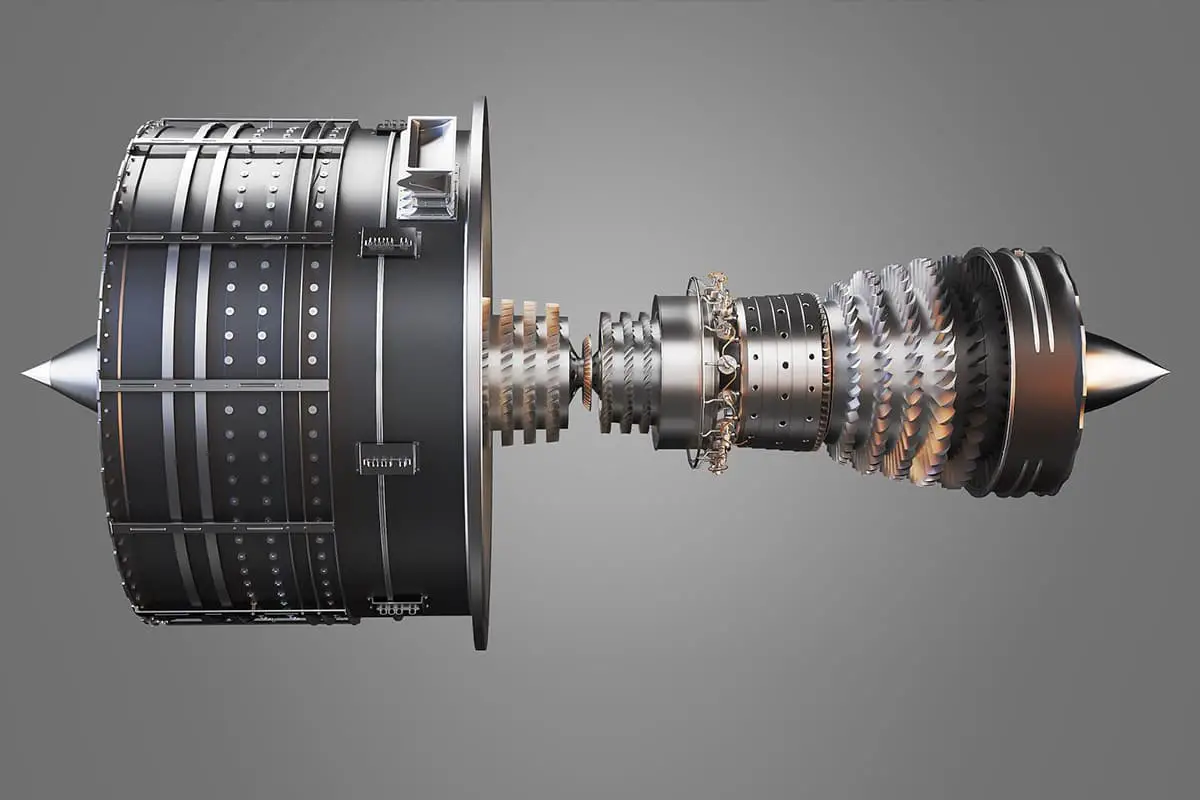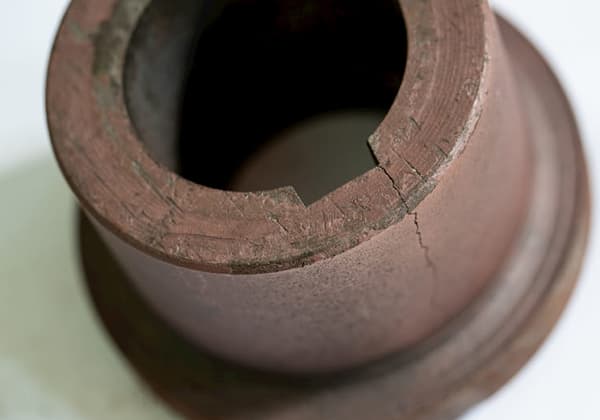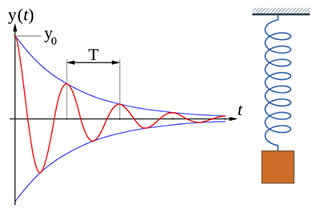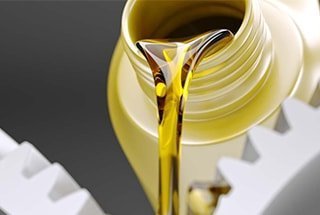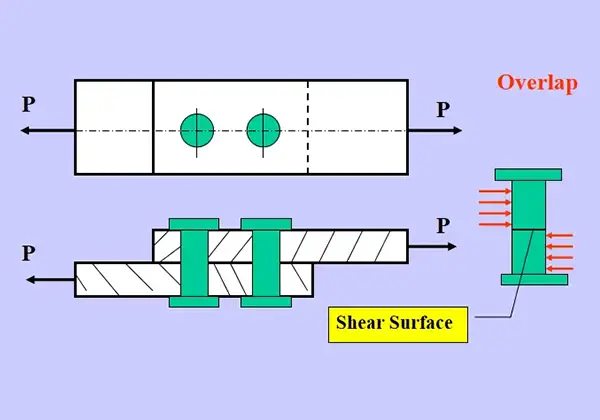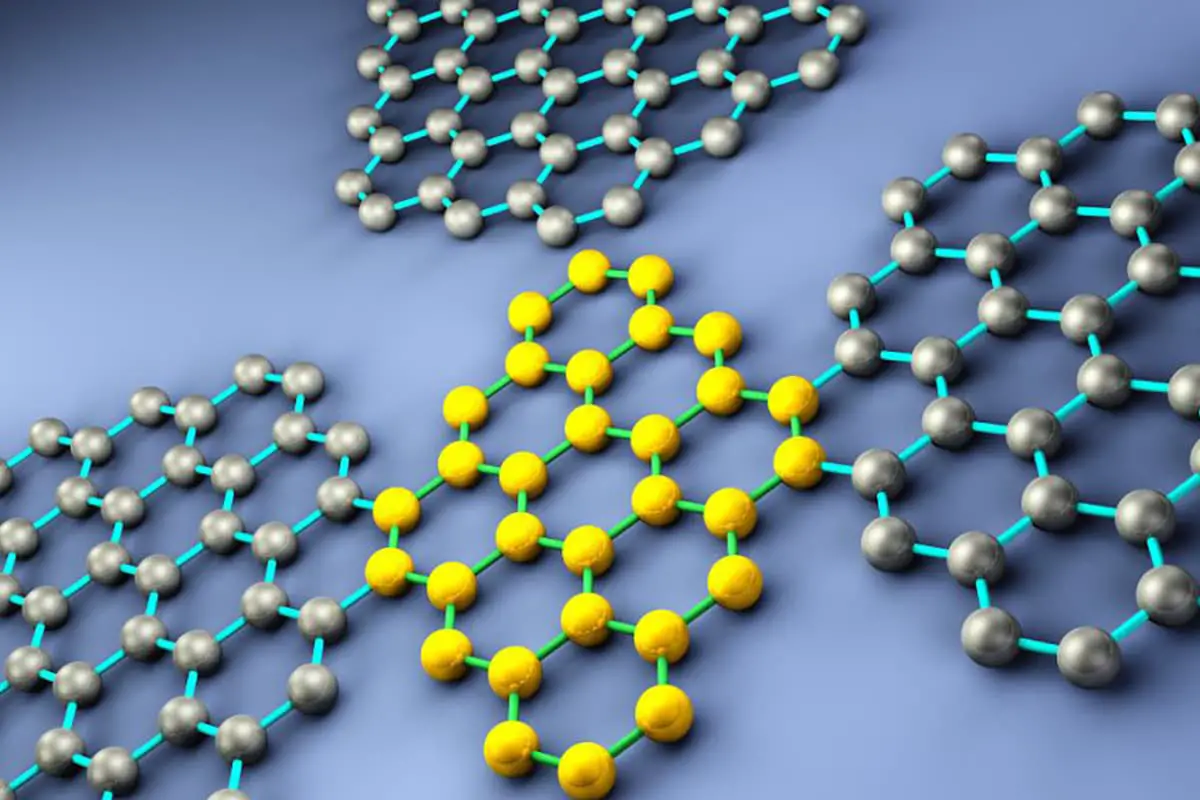
Have you ever considered what keeps your car engine from leaking oil or your airplane’s turbines running smoothly? Dynamic seals are crucial yet often overlooked components in many machines. This article explores seven types of dynamic seals—packing seals, mechanical seals, dry gas seals, labyrinth seals, oil seals, power seals, and spiral seals. By understanding their functions and applications, you’ll gain insight into how these seals maintain efficiency and reliability in various industries. Dive in to discover how these small components play a significant role in modern engineering.
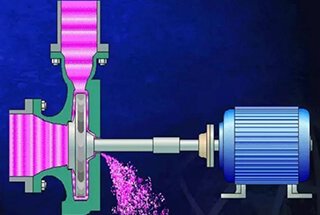
This article provides an overview of the seven most prevalent dynamic seal forms utilized in mechanical design, encompassing packing seals, mechanical seals, dry gas seals, labyrinth seals, oil seals, power seals, and spiral seals.
The challenge of effective sealing in dynamic machinery remains a persistent concern throughout the equipment’s operational lifecycle. In this comprehensive analysis, we have meticulously compiled and categorized the various sealing technologies commonly employed in mobile equipment. Our examination includes their specific applications, performance characteristics, and operational parameters, aimed at enhancing the reader’s understanding of critical sealing issues in mechanical engineering.
By exploring these advanced sealing solutions, we aim to provide engineers and technicians with valuable insights into selecting the most appropriate sealing method for their specific applications. This knowledge is crucial for optimizing equipment performance, minimizing maintenance requirements, and extending the operational lifespan of dynamic machinery across various industrial sectors.
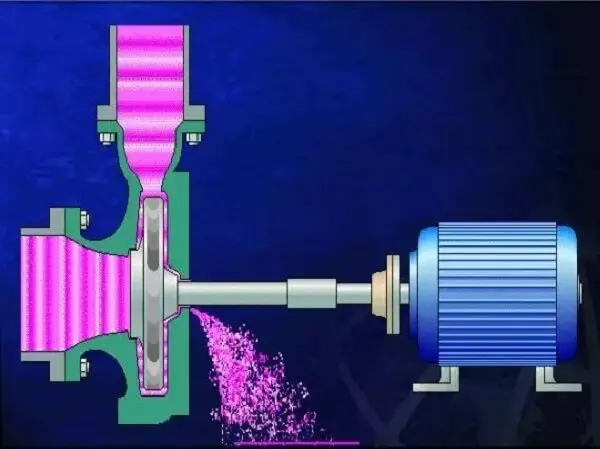
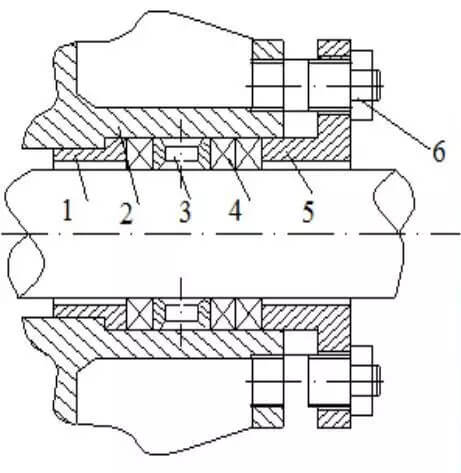
According to its structural characteristics, packing seal can be divided into:
Type: packing
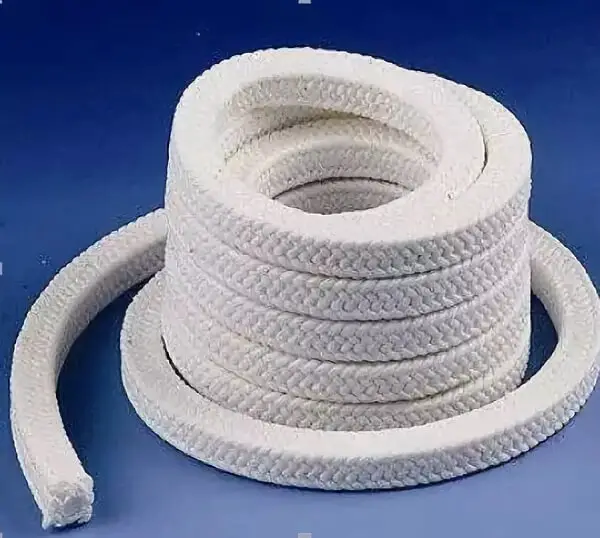
The sealing problem of moving equipment is always present during its operation. To help people understand the sealing problem better, we have organized different types of seals commonly used in mobile equipment, as well as their scope of use and characteristics.
Packing is typically made from soft threads woven together and then filled into a sealed cavity through a strip with a square cross-section. The pressure is created by the gland, which compresses the packing and forces it to be pressed against the sealing surface (the outer surface of the shaft and the seal cavity), resulting in a radial force with a sealing effect.
The choice of material for packing affects its sealing effectiveness. Generally, the materials used for packing are limited by the temperature, pressure, and pH of the working medium, as well as by the surface roughness, eccentricity, and linear velocity of the mechanical equipment the packing works on. These factors will also affect the material selection of the packing.
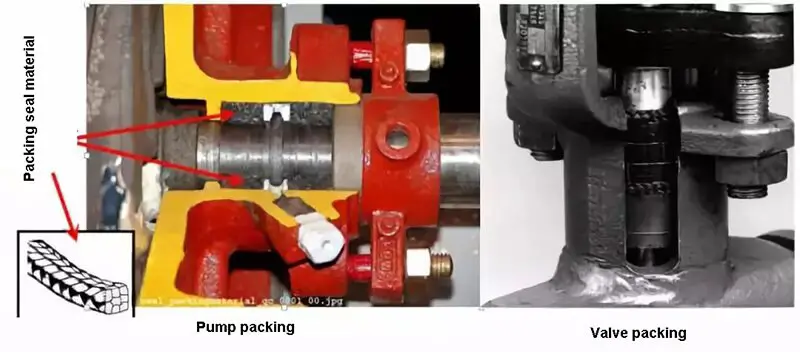
Graphite packing is a highly effective solution for high temperature and high pressure sealing. It is known for its resistance to corrosion, excellent sealing performance, and stable and reliable operation.
| PH range of applicable medium | 0-14 usually used for dynamic sealing parts |
|---|---|
| Graphite packing temperature | -100 ℃ -850 ℃ |
| Graphite packing pressure | 0-30.0MPa |
Aramid packing is a kind of high-strength organic fiber. Then the braided packing is impregnated with PTFE latex and lubricant.
| PH range of applicable medium | 2-13 Suitable for dynamic sealing parts containing solid particles |
|---|---|
| Graphite packing temperature | 260 ℃ |
| Graphite packing pressure | 10.0MPa |
PTFE packing is made from pure PTFE dispersion resin as the raw material. The raw material film is first produced, then twisted, braided, and woven into packing material. It is widely used in valves and pumps in industries with high cleanliness requirements, such as food, pharmaceuticals, paper-making, and chemical fibers, and can handle strong corrosive media effectively.
There are two types of hard packing seals: opening loop and split loop.
The opening loop ring is a metal self-tensioning seal ring used in piston machines as piston rings and in rotary machines as expansion rings. The split ring is a cylindrical surface contact dynamic seal that can be used as a rotary dynamic seal for steam turbines and aero engines, as well as a reciprocating seal for steam engines, internal combustion engines, and piston compressors (sealing between the piston rod and cylinder).
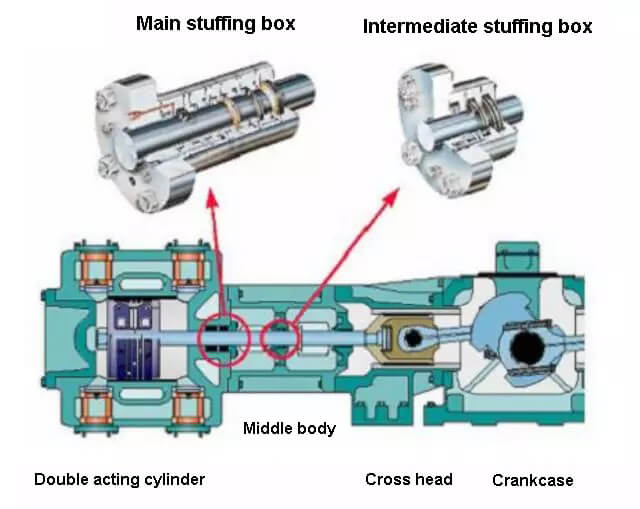
Main stuffing box structure
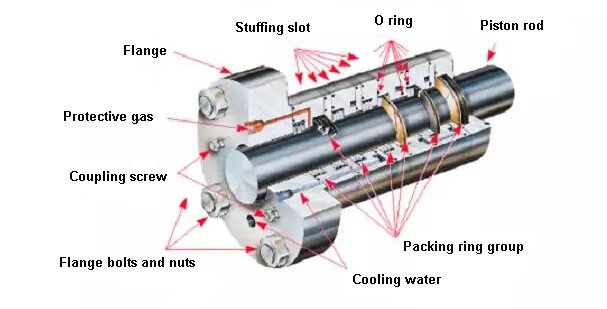
Classification of packing rings
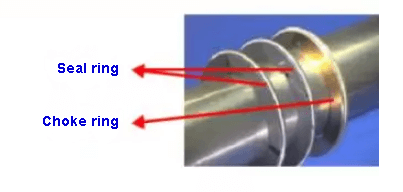

The mechanical seal is a critical component in rotating equipment, typically comprising two primary elements: the rotating component (yellow part) and the stationary component (orange part).
These components operate in precise relation to one another, with the stationary ring surface functioning as the principal sealing interface. The rotating component, attached to the shaft, moves against the stationary component, which is fixed to the housing, creating a dynamic sealing action.
Commonly referred to as face seals, mechanical seals are engineered to prevent fluid leakage in high-pressure and high-speed applications. Their design allows for efficient sealing without excessive wear, making them ideal for use in pumps, compressors, and other rotating machinery.
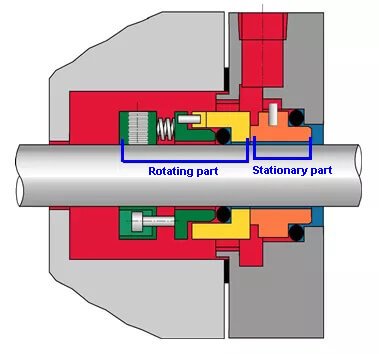
According to relevant national and international standards (such as API 682 and ISO 21049), mechanical seals are defined as devices consisting of at least one pair of end faces perpendicular to the rotation axis. These end faces are maintained in contact and move relative to each other through a combination of:
This sophisticated interplay of forces ensures a controlled, microscopic gap between the sealing faces, allowing for effective sealing while minimizing friction and wear. The design of mechanical seals can be further optimized for specific applications, considering factors such as operating temperature, pressure, fluid properties, and rotational speed.
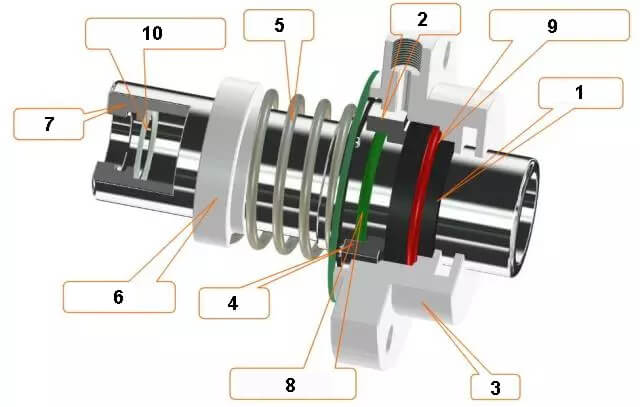
The basic components that make up a mechanical seal are:
The Dry Gas Seal represents a significant advancement in shaft end sealing technology, employing innovative micro-groove patterns on seal faces to create a non-contact, gas-film barrier. This technology falls under the category of dynamic, non-contacting seals and has revolutionized sealing solutions for high-speed rotating equipment.
Key features include:
As a self-regulating, maintenance-minimal sealing system that operates without the need for external cooling or lubrication, the Dry Gas Seal has rapidly supplanted traditional sealing methods such as floating ring seals and labyrinth seals. It has become the industry standard for shaft sealing in high-speed centrifugal compressors, particularly in the petrochemical sector where reliability and efficiency are paramount.
Applications:
Dry Gas Seals are ideally suited for use in:
These seals excel in applications where minimal process gas leakage into the atmosphere is permissible, including:
The versatility and performance of Dry Gas Seals have made them indispensable in modern industrial processes where operational efficiency, environmental compliance, and equipment reliability are critical factors.

The Labyrinth Seal is a series of annular sealing teeth arranged in sequence along the rotating shaft. These teeth create a series of interception gaps and expansion cavities between them.
The Labyrinth Seal features a series of annular sealing teeth arranged in a circular pattern along the rotating shaft. These teeth create a series of gaps and cavities that function as seals.

Labyrinth seals are the most fundamental sealing mechanism employed between stages and at shaft ends of centrifugal compressors. Their effectiveness stems from creating a series of tight clearances and expansion chambers that impede gas flow.
Based on structural characteristics, labyrinth seals can be classified into four primary types: smooth, zigzag, stepped, and honeycomb.
1). Smooth labyrinth seal
Smooth labyrinth seals are available in two configurations: integral and insert. They feature a straightforward design and are relatively simple to manufacture. However, their sealing performance is limited due to the absence of complex flow path obstructions.
2). Zigzag labyrinth seal
Zigzag labyrinth seals, like their smooth counterparts, come in integral and insert variants.
This type is distinguished by its alternating arrangement of high and low sealing teeth with varying protrusion heights. The matching shaft surface features a corresponding concave-convex groove pattern.
The interplay between the high and low teeth and the concave-convex grooves transforms the smooth sealing gap into a tortuous zigzag path. This configuration significantly increases flow resistance and improves sealing efficiency by creating additional turbulence and pressure drops.
However, zigzag seals are limited to application in cylinders or partitions with horizontal split surfaces and must be constructed as horizontally split assemblies due to their complex geometry.
3). Stepped labyrinth seal
Stepped labyrinth seals share structural similarities with smooth labyrinth seals but offer sealing performance comparable to zigzag variants. They are frequently employed at impeller covers and balance piston locations, where their stepped profile provides enhanced flow restriction without the manufacturing complexity of zigzag seals.
4). Honeycomb labyrinth seal
Honeycomb labyrinth seals feature teeth welded together to form intricate honeycomb-shaped expansion chambers. This design creates a complex, three-dimensional labyrinth structure.
This seal type offers superior sealing performance compared to other configurations and is particularly well-suited for applications with significant pressure differentials, such as balance piston seals in high-pressure centrifugal compressors.
While honeycomb labyrinth seals involve a more complex manufacturing process, they provide a high-strength sealing surface with excellent sealing capabilities. The honeycomb structure not only increases flow resistance but also helps to break up and dissipate kinetic energy in the leakage flow, further enhancing sealing effectiveness.
The Oil Seal is a self-tightening lip seal characterized by its compact design, cost-effectiveness, low maintenance requirements, and minimal resistance torque. This versatile sealing solution offers a balance of simplicity and efficiency in various industrial applications.
Primarily, oil seals serve dual functions: preventing medium leakage from within the system and protecting against the ingress of external contaminants such as dust or other potentially harmful particles. The seal’s lip design creates a dynamic interface that adapts to slight misalignments and shaft runout, enhancing its sealing effectiveness.
One notable feature of oil seals is their limited self-compensating ability for wear. As the lip experiences gradual wear over time, the seal’s inherent design allows for some degree of adjustment, maintaining its sealing integrity within certain limits. However, it’s crucial to note that this wear compensation is finite, and regular inspection and replacement schedules should be implemented to ensure optimal performance.
While oil seals excel in many low-pressure environments, they are not suitable for high-pressure applications. The lip design, which relies on relatively low contact pressure, cannot withstand significant differential pressures without compromising its sealing effectiveness or experiencing accelerated wear.
Given these characteristics, oil seals find frequent use in low-pressure applications within chemical pumps. They provide an effective barrier against fluid leakage and environmental contamination in scenarios where pressure differentials are modest. Common applications include sealing pump shafts, bearing housings, and gearboxes in chemical processing equipment where corrosive or sensitive fluids are handled.
When selecting oil seals for chemical pump applications, factors such as chemical compatibility, temperature range, shaft speed, and expected service life should be carefully considered to ensure optimal performance and longevity of both the seal and the equipment it protects.
During operation, the auxiliary impeller of the chemical pump generates pressure that counterbalances the high-pressure fluid at the main impeller’s outlet, effectively creating a dynamic seal. This power seal utilizes the pump’s rotational energy to maintain a pressure differential, preventing leakage without the need for external sealing components. However, when the pump ceases operation, the auxiliary impeller’s sealing function is compromised, necessitating the implementation of a static parking seal to mitigate potential leakage during downtime.
The auxiliary impeller’s sealing mechanism is characterized by its simplicity and robustness. Its straightforward design minimizes wear and reduces the risk of mechanical failures, contributing to a prolonged service life. This reliability is particularly advantageous in chemical processing applications where consistent performance is critical. The power seal’s effectiveness in preventing fluid leakage, coupled with its ability to handle media containing particulates or abrasive impurities, makes it an ideal choice for chemical pumps operating in demanding environments.
Moreover, the power seal’s capacity to manage fluids with suspended solids without compromising sealing integrity offers significant advantages over traditional mechanical seals in certain applications. This characteristic not only enhances the pump’s versatility but also potentially reduces maintenance frequency and associated downtime costs in industries where fluid purity cannot always be guaranteed.
Spiral seals are sophisticated dynamic sealing devices utilized in rotating machinery applications.
A precision-machined helical groove pattern is created either on the rotating shaft surface or the inner diameter of a stationary sleeve. The interstitial space between the shaft and sleeve is filled with a carefully selected sealing medium, typically a high-viscosity fluid or grease.
As the shaft rotates, the helical grooves generate a hydrodynamic pumping action. This creates a pressure gradient that effectively prevents the leakage of the process fluid, even under high-pressure conditions.
The sealing performance of spiral seals is critically dependent on several geometrical parameters: helix angle, pitch, land width, groove depth, active seal length, and the radial clearance between shaft and sleeve. These parameters must be optimized based on the specific application requirements, operating conditions, and fluid properties.
One of the primary advantages of spiral seals is their non-contacting nature, which eliminates friction between sealing surfaces. This results in minimal wear and exceptionally long operational lifespans, often outlasting other components in the system. However, the sealing effectiveness is constrained by the limited axial length available for the spiral pattern in many compact designs, potentially restricting their use in high-pressure applications.
It’s important to note that spiral seals exhibit a strong dependence on rotational speed. At reduced speeds, the hydrodynamic pumping effect diminishes significantly, potentially compromising sealing integrity. This characteristic necessitates careful consideration during system design, especially for variable-speed applications or frequent start-stop cycles.

